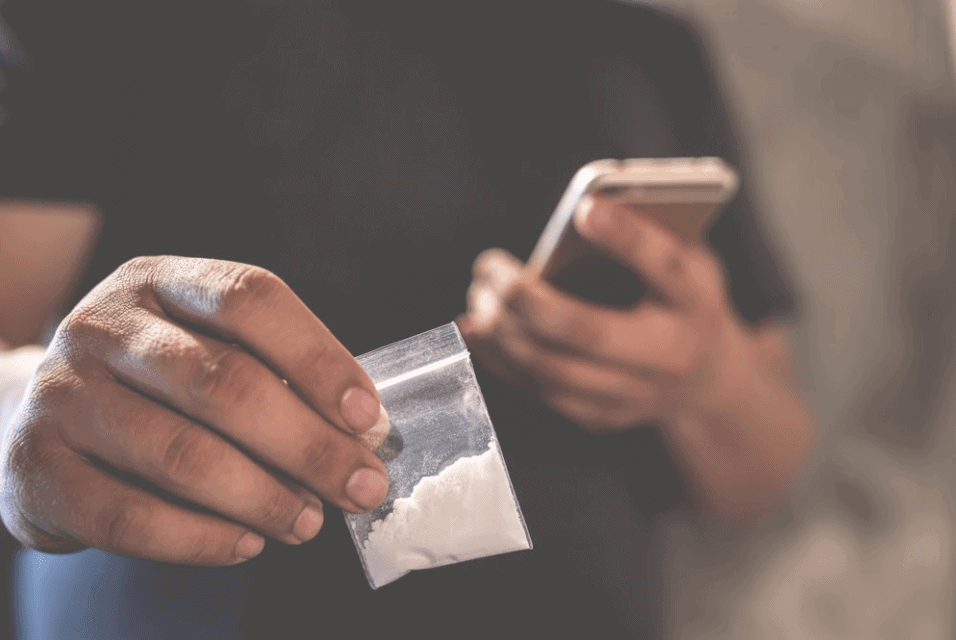Does addiction have a face?
If I asked you to imagine what a drug addict looks like, you might conjure up an image of someone who looks disheveled, suspicious, dirty, malnourished, sad, tired, or desperate. While it certainly is the case that people living with addiction can sometimes be profiled by their physical appearance, people often forget that addiction doesn’t discriminate. You may think you have an idea of how to spot warning signs; meanwhile, someone with a cocaine addiction can slip right under your nose.
Sometimes it’s the people you least expect that need the most help. Your boss, your personal trainer, your accountant, your teacher, maybe even your lawyer. Some of the most “well off” people in the world struggle with the same issues as the person you thought of when asked, “what does a drug addict look like?” Cocaine abusers often go unnoticed, but we can help you spot the signs of cocaine abuse.

What Is Cocaine?
Cocaine is a highly addictive drug made from coca plant leaves native to South America. It comes in different forms, but the most common is a fine, white, crystalline powder. Since it is a nervous system stimulant, cocaine can significantly increase your levels of dopamine. The cost of cocaine is typically over $100 per gram. Combine the short lifespan of the high and the high price of this drug, and you’re left with a costly drug habit.
Other common names for cocaine:
- Coke
- C
- Flake
- Snow
- Blow
- Crack cocaine
How Does Cocaine Work?
In its purest form, cocaine looks like an off-white rock (Crack cocaine); flakes get chipped off and ground down to take on a powder-like consistency similar to pebbles or sand. The most common way to do cocaine is by inhaling the powder form through the nostrils, but It can also be administered orally, smoked, or injected into the body.
Once ingested, cocaine stimulates your brain’s neural pathways and makes you feel talkative, energetic, and euphoric. The stimulating effects of cocaine on your body are temporary and can last anywhere from 15 – 90 minutes. When the onset effects of cocaine wear off, you are left feeling worse than when you started, so people often do cocaine multiple times a night. Your desire for food and sleep diminishes; you may stay awake all night.
Signs of cocaine addiction can be both physical and mental, where your body and mind crave the drug’s desired effects. You will feel depleted and withdrawal symptoms when the anesthetic wears off.
What are Some Cocaine Addiction Symptoms?
Cocaine use disorder can damage your natural systems associated with pleasure, memory, and decision-making. Cocaine addiction symptoms include:
- Building up a tolerance to the effects
- Irritability and/or anxiety
- Restlessness
- Financial issues
- Psychosis and hallucinations
- Nausea
- Nose bleeds / Leaky or damaged nasal passages
- Weight loss
- Malnourishment
Detox in treatment centers is sometimes recommended for cocaine users when they are ready to seek treatment, but not always necessary.
What are the Signs of Cocaine Addiction?
Frequent use of cocaine can make you build up a higher tolerance to the drug. A high tolerance means that your body becomes unaffected by the regular amount used and keeps desiring larger quantities to feel high. Having a built-up tolerance is directly related to how much money you spend on the habit and often results in financial ruin. The texture of cocaine is rough; snorting cocaine acts as an irritant to the soft tissue in your nasal passages. Since you’re damaging the lining in your nose, people who abuse cocaine often get nose bleeds, even when they’re not using the drug.
Drastic deviations in a person’s sleep cycle will occur on the nights they are using cocaine. When you notice that a person is often staying up all night, then going to sleep when the sun is out, and sleeping late into the day, this might be a sign of using.
Using cocaine for multiple days straight is referred to as “a bender.” When on a bender, the user may go a few days without sleeping until they crash. Benders cause people to act very erratically and are easy to spot. Nobody functions well when they’re going days without sleep. Since the effects of cocaine curb your appetite, when the drug is being abused, you may also notice drastic weight loss, but in an unhealthy way. Not the same kind of weight loss that comes from dieting and exercise. In these cases, people become pale and resemble a corpse.
Who is at Risk for Cocaine Addiction?
The Drug Enforcement Agency (DEA) classifies cocaine as a “Schedule ll Substance.” Meaning the substance is “dangerous with a high potential for abuse, potentially leading to severe psychological or physical dependence.” Since it is highly addictive, anybody who uses cocaine is at risk for cocaine addiction. There is a higher risk of getting hooked if you have a family history of alcohol and drug dependence.
People struggling with mental health issues, such as depression, often fall into an addictive cycle because they use cocaine to escape reality, but in reality, they’re just making things worse.

How Dangerous is Cocaine Addiction?
Many dangers come along with cocaine use disorder, both long and short-term. Long-term negative side effects include permanent damage to your brain and body, disrupting your body’s natural sleep abilities, and many other mental and physical issues.
Short-term negative effects of cocaine addiction are more present for people with existing medical conditions, mixing substances or using in excess. According to the Center for Disease Control (CDC), “1 out of every 5 drug overdose death involves cocaine.” This fact means cocaine has the 2nd highest risk of overdose rate, only being beat by heroin.
Cocaine addiction has a serious impact on your mental and physical health, and can result in permanent brain damage and even premature death. A cocaine overdose increases your heart rate substantially, which increases the risk for cocaine users to have a heart attack or go into cardiac arrest.
Effects of Cocaine Withdrawal
Cocaine addicts who stop suddenly using cocaine may undergo an initial crash. Abstinence from cocaine can be intense and cause severe discomfort. Some of the expected effects of cocaine withdrawal include:
- Fatigue
- Depression/ anxiety
- Agitation and irritability
- Sleep disturbances
- Strong Cravings
- Increased blood pressure
Addiction treatment centers that offer detox can help mitigate withdrawal symptoms with medically assisted substance abuse treatments.
How to Manage and Treat Signs of Cocaine Addiction?
Cocaine addiction is a very complicated substance use disorder that impacts every aspect of your well-being. The most effective treatment for cocaine addiction is to visit a treatment facility and discuss all your symptoms of addiction to cocaine with a doctor. A detox may or may not be necessary, but never try detox on your own. Having altered the chemicals in your body and brain already, abruptly stopping can be dangerous.
While sometimes behavioral therapy is the only available form of treatment, the integration of both therapy and medication may be the most effective approach for treatment of cocaine dependence.
Inpatient treatment programs can last 30, 60, or 90 days and include support groups, vocational guidance, 1-on-1 counseling, and monitoring of your levels. There are no medications designed specifically for the treatment of cocaine addiction, but a few medications can help treat withdrawal symptoms.
Pacific Sands Recovery Center offers an inpatient treatment program with a “family style” environment. A limited number of clients admitted allows for a 2:1 staff-to-client ratio and provides the best level of care possible. Don’t face the signs of cocaine addiction alone. Contact us today, and talk to one of our medical professionals to start your journey on the road to recovery.
